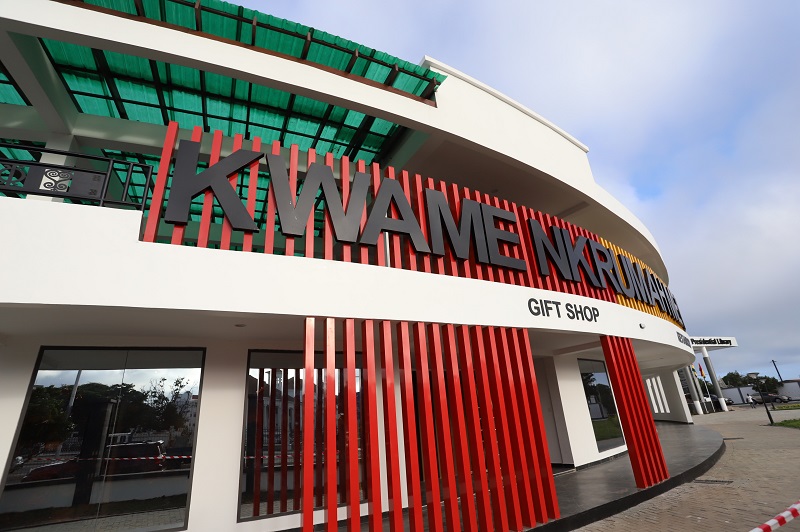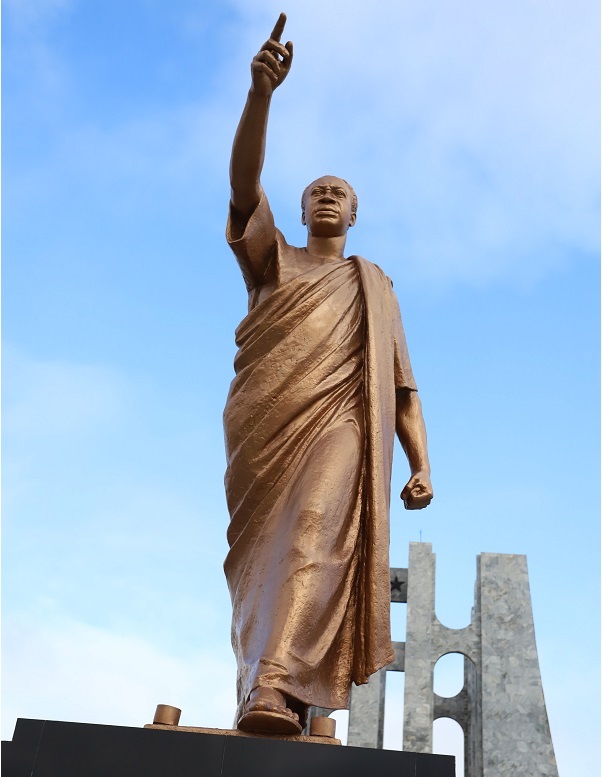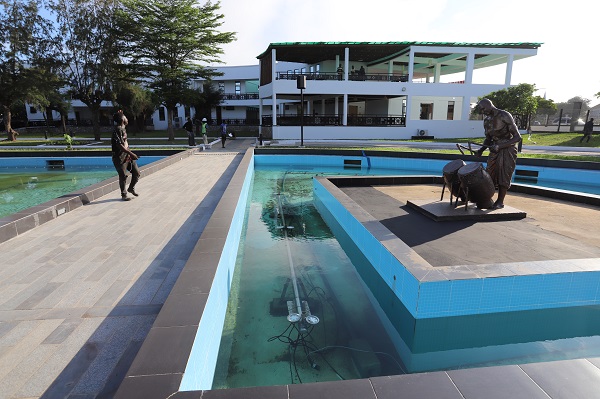The stature of Kwame Nkrumah as an iconic Ghanaian and African personality came alive with the inauguration of a refurbished and modernised edifice that serves as his memorial.
The monumental project to give the Kwame Nkrumah Memorial Park a complete makeover befitting the country’s first Republican President has seen the holy grounds which hold the remains of Dr Kwame Nkrumah, the African Personality of the Millennium and father of Pan Africanism, renovated and decked in modernity.
he hallowed place where Dr Nkrumah declared Ghana’s independence on the eve of March 6, 1957, now befits its status as the Mecca or Jerusalem for all Pan-Africanists across the globe.
Originally an old polo ground, it was later designed as the Kwame Nkrumah Memorial Park and Mausoleum by former President J. J. Rawlings in 1991, where the remains of the former President and his wife were interred.
President Nana Addo Dankwa Akufo-Addo yesterday opened the renovated and enhanced park financed at more than GH¢30 million in honour of the global icon.
He said the outstanding pan-Africanist that Dr Nkrumah was among his generation, his burial site must be appropriate to his status and exceptional contribution to the liberation of Africa from colonialism, hence the project.
Scope of work

The additions to the park, which is located on the Atta Mills Highway in Accra, adjacent the Arts Centre, include a Presidential Library, a reception facility, an amphitheater, a restaurant, Freedom Hall and the digitalised payment and access system.
The refurbishment covered the tombstone which had been upgraded with new marble and the museum expanded with an audio-visual tunnel where the voices and images of the former President could be heard and seen.
The museum houses his personal stuff such as books, dresses, beds and suitcases.
It has further been given an upgraded VVIP Lounge, expanded recreational area, a modernised gift shop, and the fountain now synchronises with audio visuals, which mimics the Burj Khalifa musical fountain in Dubai.
Another addition to the park is the old headless bronze statue of Dr Nkrumah, which was vandalised after the 1966 coup that overthrew him.
The ‘severed’ head has been erected beside the statue.
A state vehicle used by the former President, a vintage Cadilac, made in the United States and secured with bulletproof features in Bulgaria, is also parked in the Freedom Hall.
The inner perimeter roads of the park have also been fixed as part of the rehabilitation which started in July last year.

COVID-19
The park, which attracted about 90,000 visitors annually prior to the COVID-19 pandemic in 2020, before it was closed for a year for the renovation, is now expected to attract more than a million tourists annually.
President Akufo-Addo said the modernised Kwame Nkrumah Memorial Park was in line with plans by the government to make it one of the best tourism and heritage attractions in West Africa.
He charged the Ministry of Tourism, Arts and Culture (MTAC) to ensure that agencies under the ministry devised effective marketing and promotional strategies to achieve the target.
The President said the government was building a museum and heroes park for each of the famous Big Six along with other tourist attractions in various parts of the country to make the country the tourism hub of West Africa.
Others, he added, were a memorial park in Cape Coast for the Aborigines, a memorial enclave in Tamale for the founders of the erstwhile Northern People’s Party to symbolise their participation in the drive for national independence, and the completion of ongoing works at the Bonwire and Yaa Asantewa museums, both in Ejisu in the Ashanti Region.

President Akufo-Addo said as heritage sites, they had the potential to spur the development of the creative arts industry and enhance sustainable development.
Seeking to attract visitors, the Ministry of Tourism, Arts and Culture and the Ghana Tourism Authority have embarked on product improvement and customer service orientation for operators in the hospitality and tourism value chain.
Dr Nkrumah, who passed away on April 27, 1972 in Bucharest, Romania, was first buried in Conakry, Guinea.
The body was later exhumed and reburied in his hometown, Nkroful, in the Western Region before being finally interred at the Mausoleum in Accra, which hosts rare artefacts relating to Ghana’s independence.



